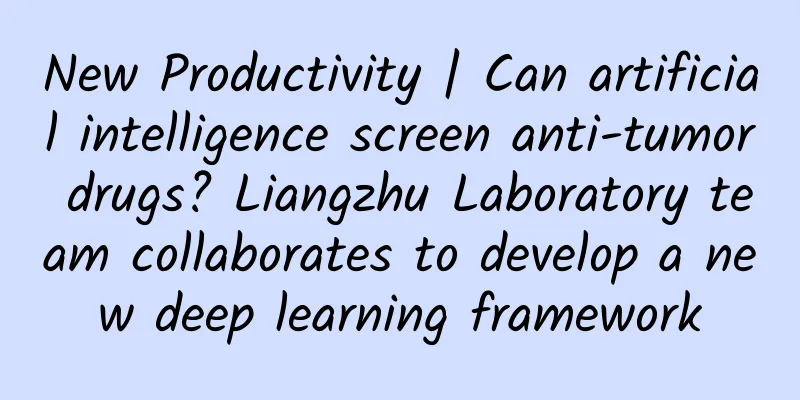New Productivity | Can artificial intelligence screen anti-tumor drugs? Liangzhu Laboratory team collaborates to develop a new deep learning framework

|
In ancient times, Shennong tasted hundreds of herbs to understand their medicinal properties. Today, artificial intelligence can also "try" drugs in the digital world and predict their effects on different types of tumor cells. Recently, the Liangzhu Laboratory/Zhejiang University School of Basic Medical Sciences Guo Guoji, Han Xiaoping, Xia Hongguang and other teams have jointly launched an innovative deep learning framework "Shennong", which provides a new way to screen anti-tumor drugs. The relevant research was published in National Science Review. | Workflow and cell dataset statistics of the pan-tumor single-cell atlas (all images in this article are from Liangzhu Laboratory) At present, anti-tumor drug screening mainly relies on transcriptome sequencing data analysis to understand the genetic information of a large group of tumor cells and judge the effect of drugs. However, this method often ignores the complexity of the tumor. Each cell may be different, and tumor cells and their surrounding environment will also affect each other. In addition, many studies only focus on a single type of cancer and do not fully utilize the commonalities between different cancers. Therefore, it is urgent to develop drug screening methods based on single-cell pan-tumor maps, which are like a detailed "cell map" that records the characteristics of each cell in various tumors. By analyzing these cell data, researchers can more effectively screen anti-tumor drugs at the microscopic level and have a clearer understanding of the mechanisms of action and potential side effects of these drugs. Traditional drug screening or drug discovery methods are often time-consuming and costly. Artificial intelligence and machine learning methods have accelerated the process of drug discovery and development. The Shennong framework introduced by researchers is an innovative example of such methods. | Construction process and application direction of Shennong framework Shennong Framework can simultaneously observe the reactions of tens of thousands of cells after exposure to drugs. Unlike simple "effective/ineffective" judgments, it understands and describes the changes in each cell from multiple dimensions. The analysis system uses a deep learning model, like a "drug detective" who can quickly process massive amounts of information. It can not only extract the most critical features of cell responses, but also describe these changes in a probabilistic way: instead of simply saying "this drug is effective for this type of cell", it can describe in detail "how likely this drug is and in what way it affects the cell". This meticulous analysis method allows researchers to have a more comprehensive understanding of the drug's mechanism of action and even discover new uses for the drug. When the Shennong framework is applied to the pan-tumor cell atlas, it can not only predict the effects and side effects of drugs and help screen drugs, but also discover some approved drugs that may be useful for other cancers. For example, the breast cancer treatment drug "exemestane" was found to have a significant anti-proliferative effect on lung cancer cells, and this finding was confirmed in a phase I clinical trial. | Comparison of third-party datasets To verify the accuracy of the Shennong framework, the researchers also compared its prediction results with those of other third-party data sets. The results showed that the framework was able to extract unique and common features of cells from data from different sources, and the prediction results overlapped by 30% to 45%, indicating that the Shennong framework has good robustness and generalization ability. "The Shennong framework demonstrates good robustness and interpretability, and is expected to significantly improve the efficiency and accuracy of drug screening and accelerate the process of new drug development," said a relevant person in charge of the Liangzhu Laboratory team. (Source: Chao News, Liangzhu Laboratory) |
>>: Are ovarian tumors caused by anger?
Recommend
The “removal or retention” of wisdom teeth, you will understand if you read this patiently!
Wisdom tooth refers to the third molar on the inn...
Why is the leucorrhea tofu-like and smelly?
In our lives, it is inevitable that some diseases...
These three foods are essential for regulating women's endocrine system!
Under the influence of tremendous life and work p...
What should pregnant women do if they have stretch marks?
Pregnancy is a very happy thing, but many women w...
Medicine for irregular menstruation
Menstruation is a manifestation of a woman's ...
What causes stomach pain in early pregnancy?
Pregnancy is a great joyous event for a family. T...
What are the benefits of drinking pollen for women
Beauty and skin care has always been something th...
Causes of Endometriosis
Endometriosis is a common condition in our lives,...
Can pregnant women eat mango?
Mango is a favorite choice of many people. The nu...
Pregnant woman yelling and throwing tantrums
Generally speaking, after a woman becomes pregnan...
[Medical Q&A] What is the blood sugar control target for patients with type 2 diabetes?
Author: Liu Bing, deputy chief physician, Beijing...
Why does I have a low fever during ovulation?
A low fever does not mean that the body temperatu...
How to tell if you are a virgin
Asian men generally have a virgin complex, and no...
How to remove cesarean section scars
Women have to go through the process of pregnancy...









